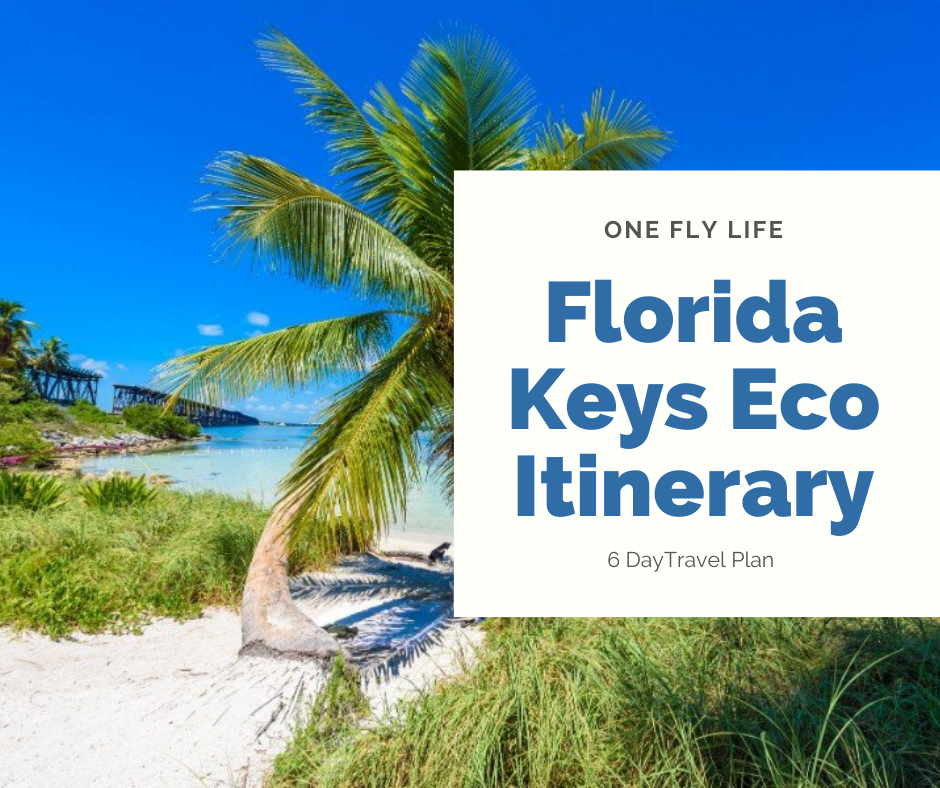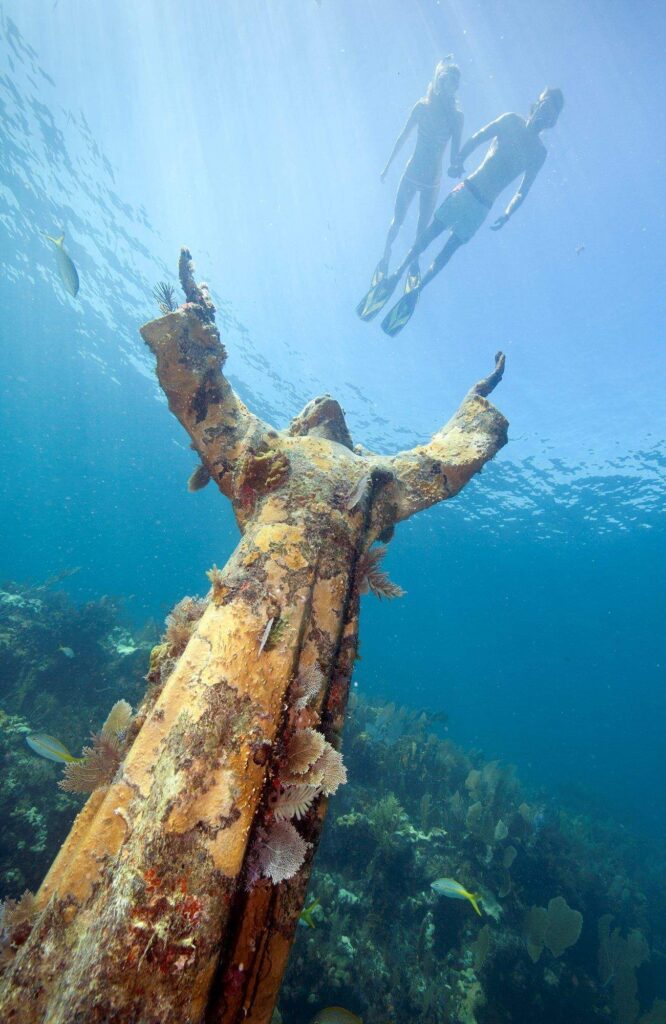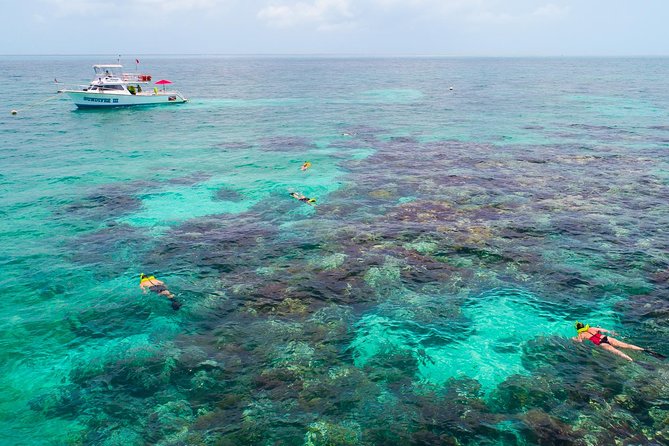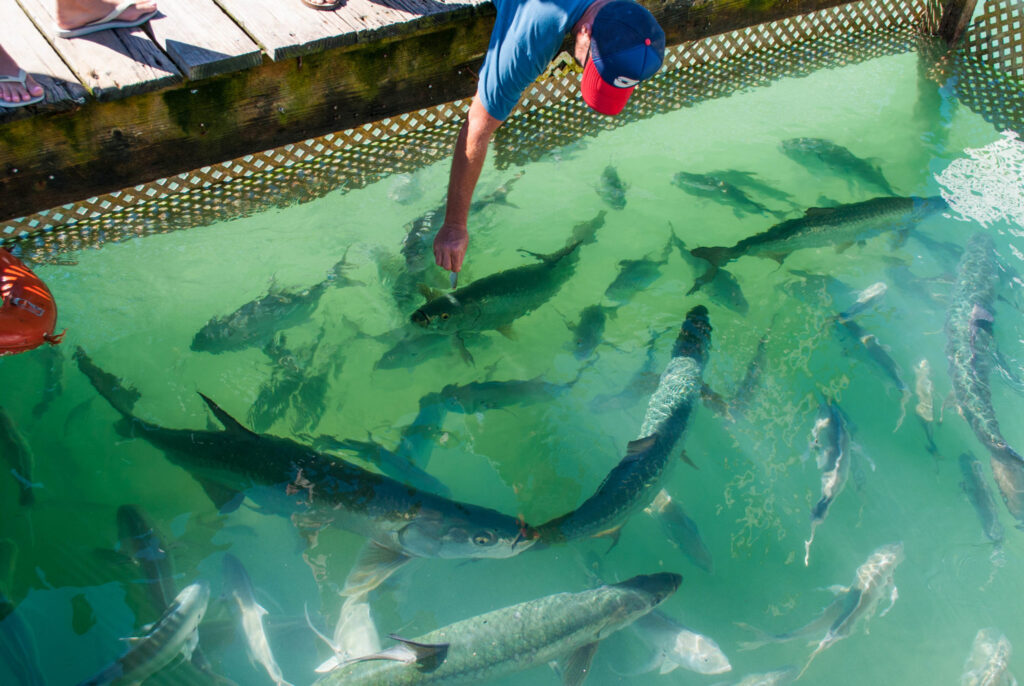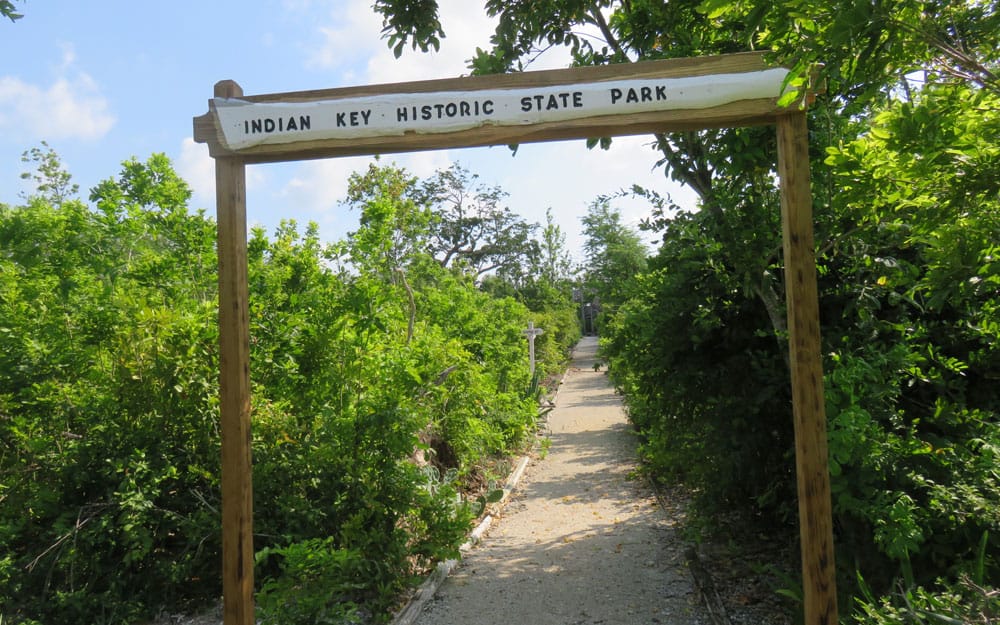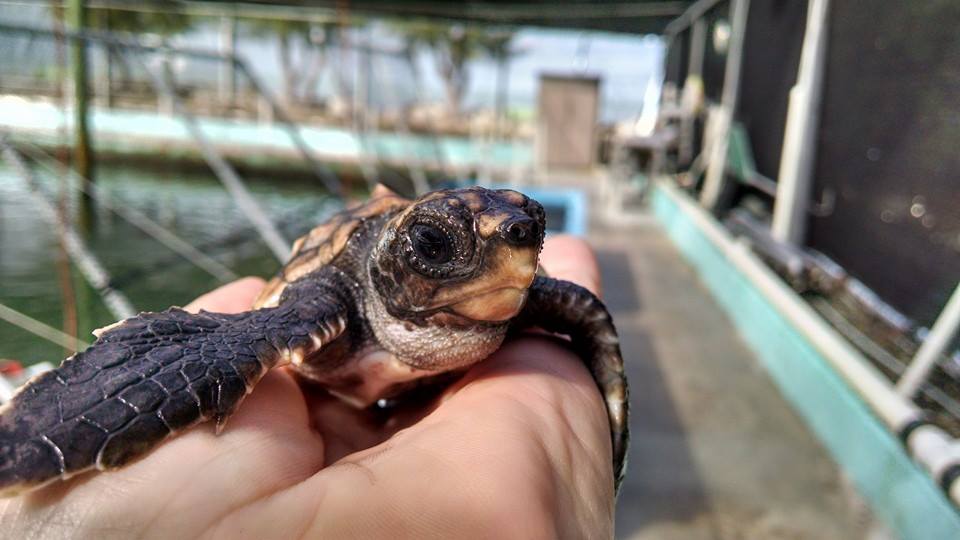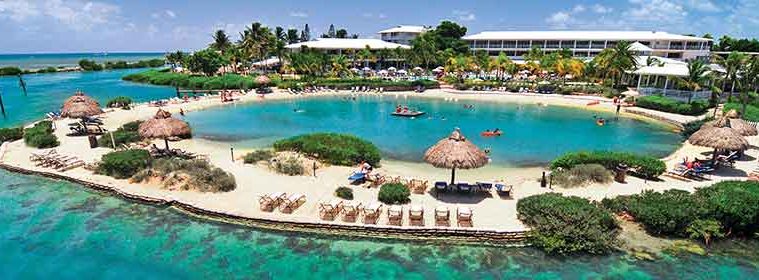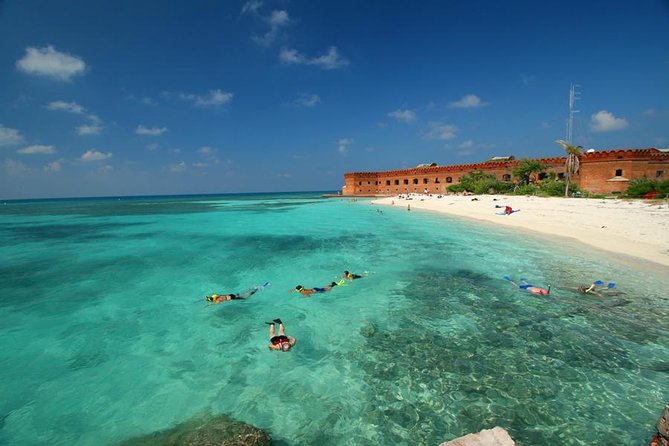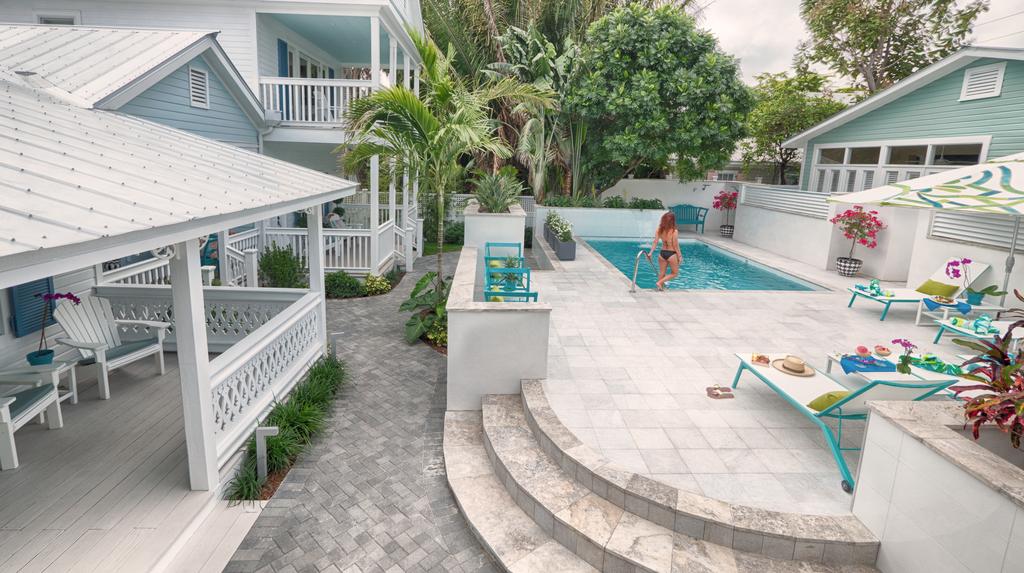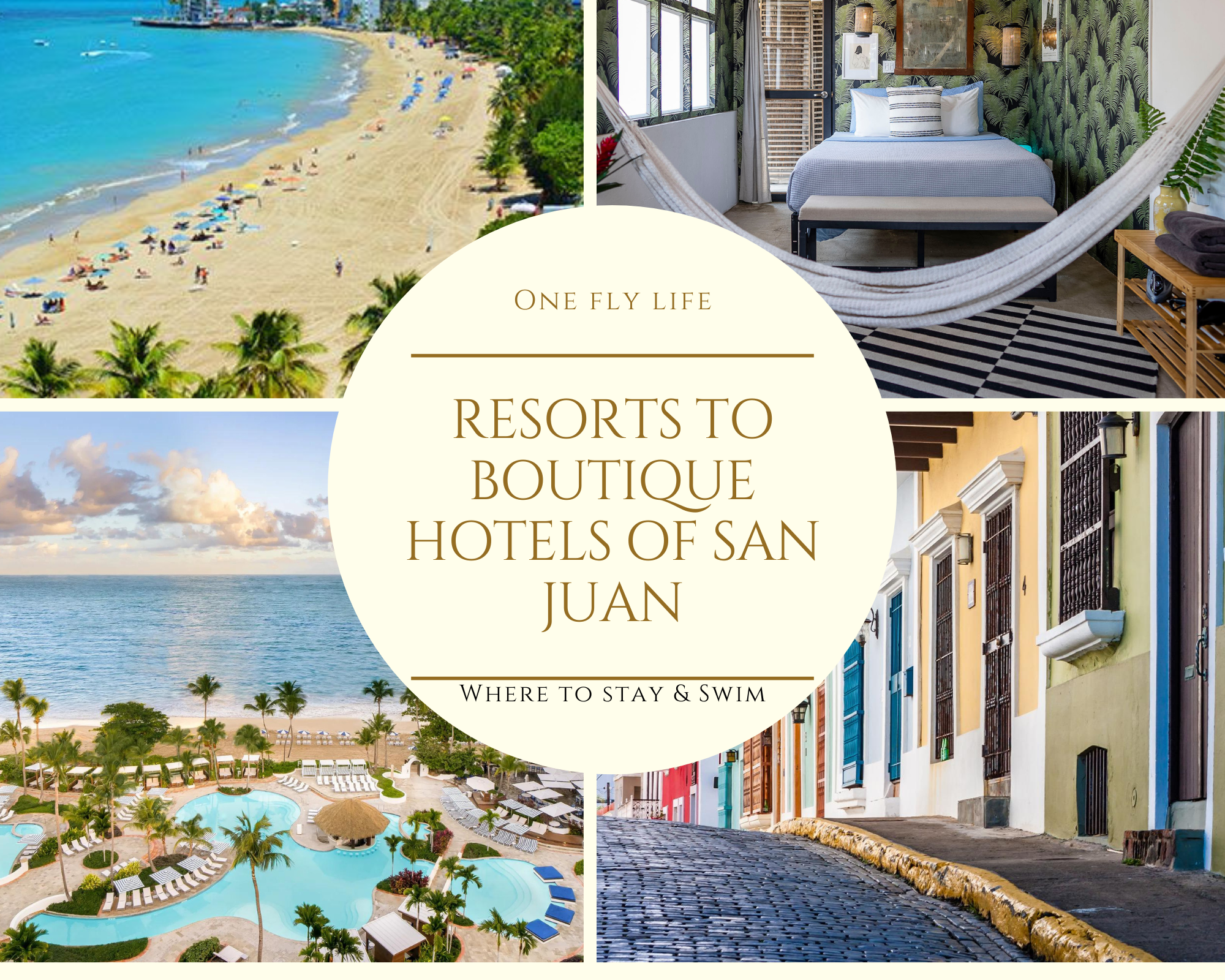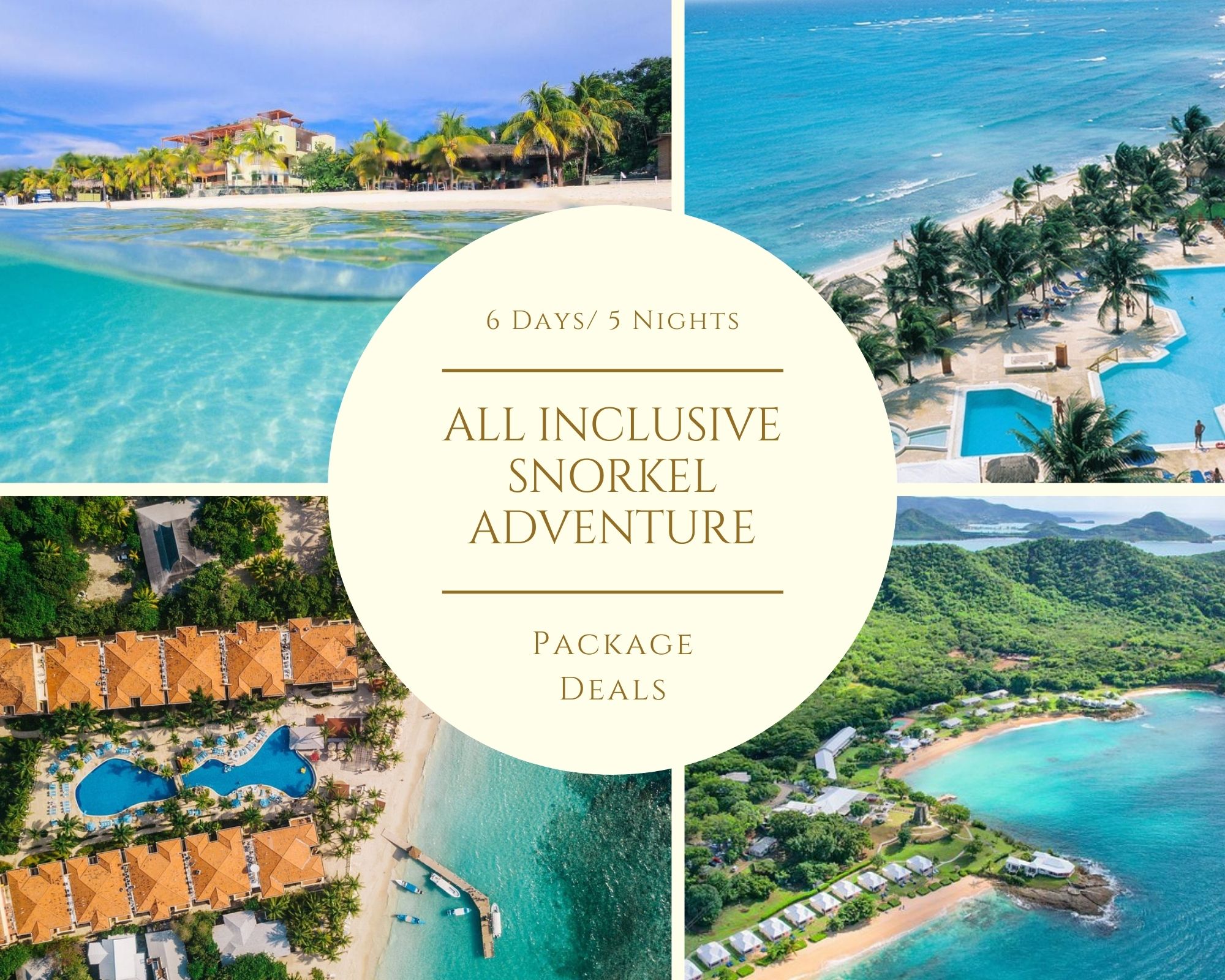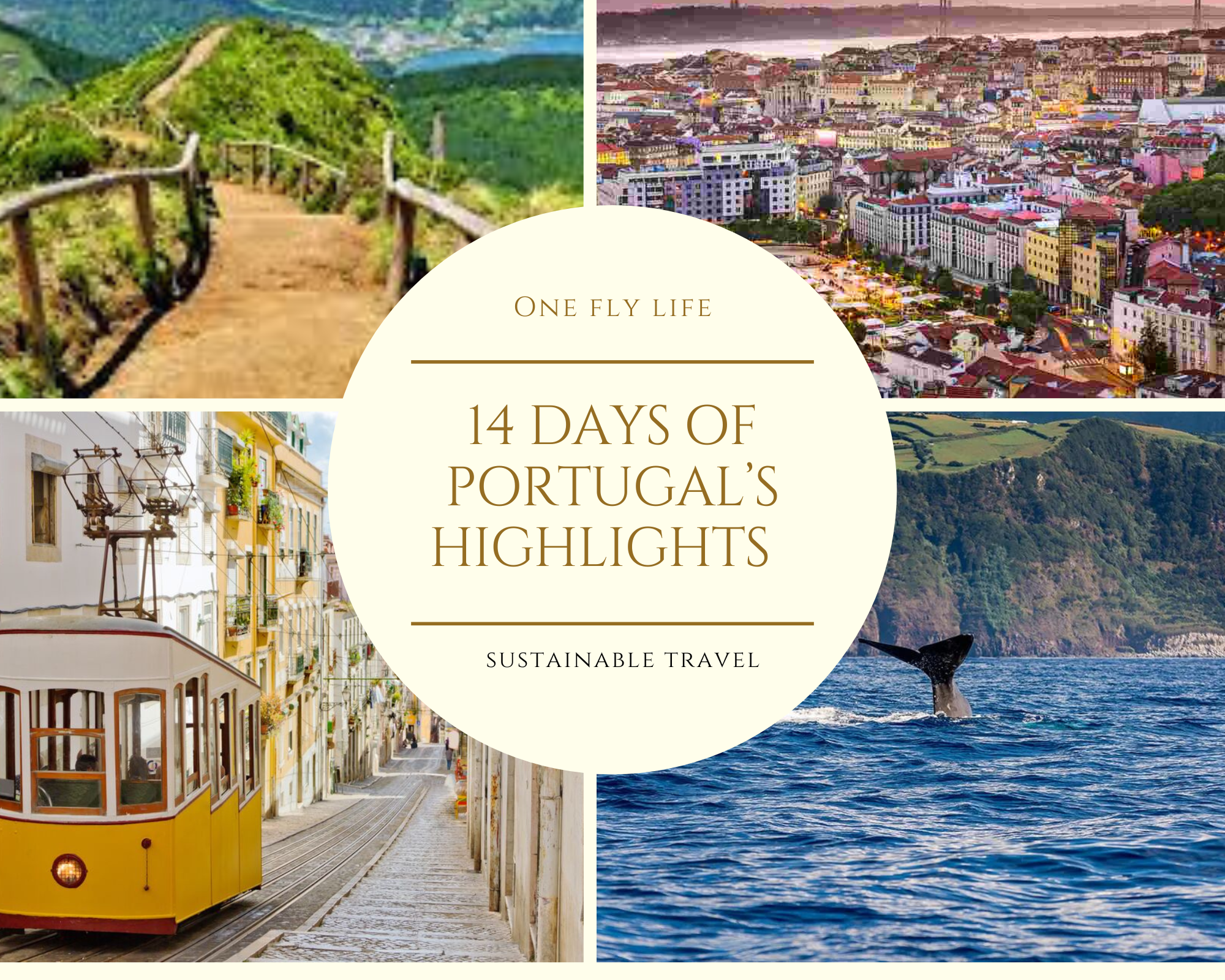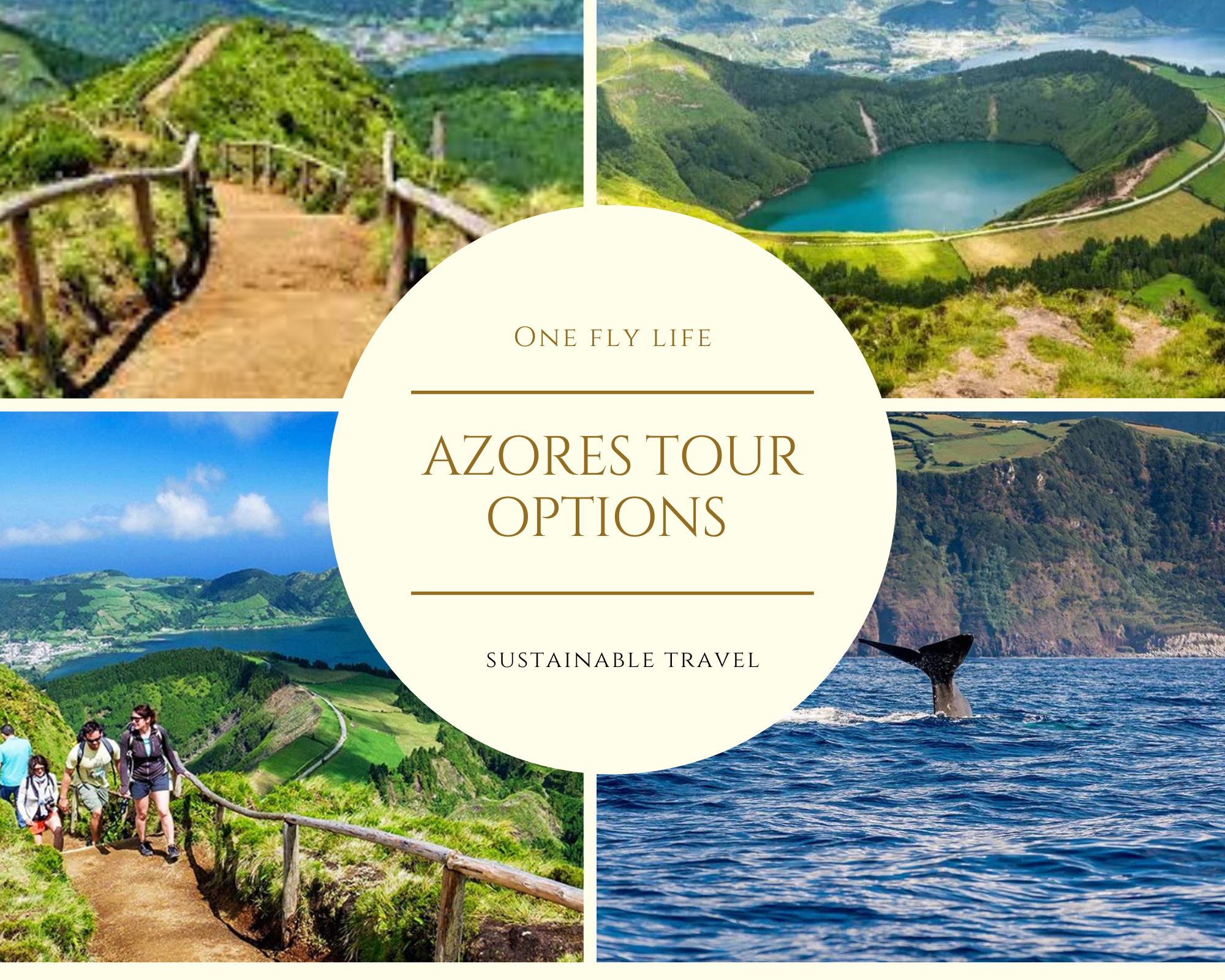Day 1: Key Largo
If you visit an “Eco Tour” outfitter in Key Largo, chances are that you’ll be looking out the window at the environmentally fascinating place where freshwater from the Everglades mixes with the saltwater of Florida Bay. Key Largo is unique among the Florida Keys in that it abuts Everglades National Park along its southeastern-most border. Some Key Largo outfitters also offer extended kayak and canoe trips for those who enjoy wilderness camping. They will arrange 7-day paddling trips from Flamingo, a national park outpost where the Everglades meet the sea, to Everglades City on Florida’s west coast.
For those who do not kayak or canoe, there are also tour boat operators who are happy to introduce you to the wildlife and wilderness. You can even arrange an air-boat ride through the grassy interior of the Everglades, which is less than an hour’s drive away!
John Pennekamp Coral Reef State Park (MM 102.5, Oceanside)
Spend the day at John Pennekamp Coral Reef State Park and discover the oldest underwater park in the world. You will be able to enjoy the park’s popular water activities: viewing the reef on a glass-bottom- boat, snorkel and scuba tours, as well as canoeing and kayaking.
Day trip and overnight trip: Backcountry Cowboy Outfitters
Day 2: Islamorada
Indian Key on the Atlantic Ocean side of Islamorada is another site that is exclusively reachable by private boat or tour. Take a walk on this island and retrace ancient footsteps of the American Indians who frequented the island thousands of years ago! In the 1830s, a Staten Island businessman set up an outpost here to salvage cargo from ships stranded on the nearby reef. Unfortunately for him, success was short lived for the settlers. In the early morning of August 7, 1840, in a desperate attempt to escape from an Indian camp attack, settlers hid from their attackers in a turtle kraal. In the Keys, we used kraals as a pen used to raise sea turtles for food. Today, the island is home to Indian Key State Historic Site.
By boat via Robbie’s Island Heritage Tours:
Robbie’s Island Heritage Tours are a perfect way to experience the raw beauty and wonder of the Florida State Parks in Islamorada. The tours depart at Robbie’s Marina.
Lignumvitae Key Botanical State Park (MM 78.5)
The virgin tropical hardwood hammock that thrives on this island was once common on most of Florida’s Upper Keys; most of these forests have been lost to development on other islands. In 1919, William J. Matheson, a wealthy Miami chemist, bought this tiny island and built a caretaker’s home with a windmill for electricity and a cistern for rainwater. Today, his hideaway is the visitor center for this island forest. Ranger-guided tours are given twice daily, Friday through Sunday. The park is accessible only by private boat or tour boat. Tour boat services, as well as boat and kayak rentals, are available from Robbie’s Marina.
By paddle board via The Kayak Shack:
Pack your snorkel gear and cooler, and head for Indian Key State Park! Both first-time and experienced paddlers find the 20-minute paddle to the island very enjoyable and easy. Park your kayak on our sandy beaches and explore the remnants of the old wrecking colony destroyed by the infamous surprise Indian attack. Tour includes walking and snorkeling the key. The tour lasts about 3 hours. The Kayak Shack is located at Robbie’s marina.

Robbies Marina: Photo Credit MB Sees 
Indian Key
Day 3: Key Marathon (MM 50)
Crane Point, a slightly elevated patch of land we refer to as a ‘hammock’ is tucked away amid the heart of Marathon. On this 64-acre tropical oasis, you can experience the natural beauty of our native hardwood trees, nature trails and educational displays for adults and children. Crane Point was originally set up as a homestead by George Adderley, a Bahamian man, and his family. Adderley and his family lived a simple life among exotic tropical trees, such as the lignumvitae, whose incredibly hard wood was once used to make bowling balls! The Adderleys survived by making charcoal and gathering and selling sponges from the crystal clear waters of the Keys. The Adderleys no longer live here, but their home and its beautiful surroundings remain. The Adderley home has been restored and is a popular stop along the 2.5 miles of trails and wooden walkways crisscrossing the hammock. Trolley tours of the botanic gardens and historic sites can also be arranged. Today, the entire area is owned and managed by the Florida Keys Land and Sea Trust, a private organization working to protect the Keys.
The Turtle Hospital (MM 48.5)
The Turtle Hospital opened its doors in 1986 with four main goals: rehabilitate injured sea turtles and return them to their natural habitat; educate the public through outreach programs and visit local schools; conduct and assist with research aiding to sea turtles (in conjunction with state universities); and work toward environmental legislation to make the beaches and water safe and clean for sea turtles.
Guests are invited to take a guided educational tour of the hospital facilities and the sea turtle rehabilitation area. This educational experience lasts approximately 90 minutes and provides a presentation on sea turtles, as well as a behind-the-scenes look at the hospital facilities and rehabilitation area. At the end of each program, guests are invited to feed the permanent resident.
Florida Keys Aquarium Encounters (MM 53, Bayside)
At Florida Keys Aquarium Encounters, the primary attraction revolves around its unique aquarium “encounters”. The encounters put visitors in the heart of the action with the ability to personally interact with the native inhabitants of the fabulous marine ecosystem found in the Florida Keys. In an effort to inspire visitors to adopt a passionate stance on conservation and preservation of our fragile marine ecosystems, the encounter programs immerse visitors in close and personal contact with a wide variety of marine animals. This one-on-one experience fosters a stronger connection and appreciation for both marine animals and the entire ocean.
During the encounters, visitors are able to interact with a wide variety of fish and marine species in habitats that closely mimic those that would be found on the reef, near-shore and coastal South Florida ecosystems. At Florida Keys Aquarium Encounters, you can immerse yourself in the fabulously unique environments of the Florida Keys, including getting into the tank with our coral reef dwellers, stingrays and much more. Children and adults are welcome to join their trained staff for adventures both underwater and on the water. Whether you choose one of the assisted dives in the Coral Reef Encounter or play with the stingrays in the shallow water Stingray Encounter, kids of all ages are sure to be introduced to a new world of fun in the artificial ocean environments.
Stay: Hawks Cay Resort
Days 4, 5 and 6: Big Pine, the Lower Keys and Key West
Bahia Honda State Park (MM 37, Oceanside)
On your way to Key West, make a stop at Bahia Honda State Park. Featuring an award-winning beach and historic bridge, Bahia Honda State Park is one of the favorite destinations. The beach was rated the second most popular beach in the Keys by the patrons of TripAdvisor.com. Bahia Honda’s pristine sandy expanse is part of the 524-acre state park located on Bahia Honda Key between Mile Markers 36 and 37. One of the Florida Keys’ most popular camping and recreation areas, Bahia Honda offers deep near- shore waters for swimming and snorkeling, as well as camping and water sports including kayaking and fishing, and a marina.
Key Deer Refuge (MM 30, Bayside)
Another great place, unique to the Florida Keys is the Key Deer Refuge. You don’t have to set foot in the ocean to have a true Eco tour in the Lower Keys! Big Pine Key is famous for its pine trees and the miniature version of the white tail deer that has evolved among them. Park along one of the roads passing through the National Key Deer Refuge and you are almost certain to see one of these unique deer. Please don’t feed or pet them! Managers want to keep the Key Deer as wild as the Lower Keys backcountry itself.
Key West
Key West is the gateway to a vast ecotourism playground extending 70 miles westward to the uninhabited sand spits and coral formations of Dry Tortugas National Park. If you want to stay relatively close to the island, you can take a catamaran sailboat tour into the shallow waters and uninhabited keys that frame the island’s famous sunsets. Locals call this area “The Lakes”, and once there, you can hop onto a kayak and paddle over patch coral formations or along mangrove fringes. You can even grab your snorkel gear and study the fish, grasses, and soft corals. Some tours will take you all the way to Boca Grande Key, an uninhabited island favored by locals for its white sandy shoreline and beautiful coral patch reef. Other tour operators will take you in the opposite direction to the mangrove backcountry northeast of Key West.
If you prefer a bird’s eye view of the watery wilderness collectively known as “West of Key West”, you can arrange a front row seat! Small seaplanes leave several times a day from Key West International Airport for historic Fort Jefferson, a Civil War-era fortress in the Dry Tortugas.
Danger Charters: Sail, Snorkel, Kayak
Explore the wondrous and mysterious mangrove islands with one of the very knowledgeable nature guides. Learn all about the mangrove ecosystem while paddling through a maze of mangrove-canopied canals and streams. While there, be sure to take note of the incredible tropical array of birds, stingrays, sharks, sport fish, and more! And, if your kayak skills range from novice to non-existent – no worries! The kayaks are very stable sea kayaks that novices from ages 6 to 90 and beyond can easily paddle with a few simple instructions from your guide! All of the day excursions feature guided kayaking through our labyrinth of mangrove islands, snorkeling on pristine and uncharted patch reefs and wrecks, and, of course, sailing!
Danger Charters’ specialty shallow-draft vessels visit a variety of private and pristine patch reefs in the calm and protected waters of the Florida Keys backcountry to provide you with an exceptional and personal underwater experience. And, due to the topography of islands and flats that surround the wildlife refuge, you can be assured of great visibility and calm seas while you snorkel amid a beautiful collection of corals, sponge gardens, tropical fish, and dramatic marine life.
Fort Jefferson & Dry Tortugas National Park
Ferry Service: Yankee Freedom Air: Key West Sea Planes
A 46-square-mile area of Dry Tortugas National Park is a Research Natural Area (RNA), a no-fishing, no- anchoring ecological preserve that provides a haven for species to live and breed. The new RNA is located in the northwest portion of Dry Tortugas National Park; a remote offshore preserve positioned approximately 70 miles west of Key West in the Gulf of Mexico. The park contains the Civil War–era Fort Jefferson, believed to be the largest masonry structure in the Western Hemisphere.
If you love Key West snorkeling, then Dry Tortugas National Park offers some of the best offshore snorkeling in North America, just 70 miles from Key West, Florida. The shallow waters (5-15 feet) make snorkeling at the Dry Tortugas fun for everyone. Whether beginner or expert, you can enjoy an abundance of colorful tropical fish and living coral among the waters. Directly accessible from the brilliant white sand beach, you’ll find the Fort Jefferson snorkeling areas. Look for majestic corals, many varieties of tropical fish, starfish, queen conchs, and much more in this protected marine sanctuary.
Stay: The Gardens Hotel
If you are someone who loves to travel & loves to make an income check out becoming a travel agent! Earn travel agent rates today!!

